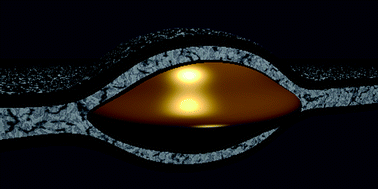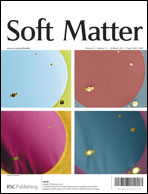Hydrophobic molecules such as oils and certain drugs can be encapsulated between the two leaflets of an amphiphilic bilayer in both lipid and polymer systems. We investigate the case where the hydrophobic molecules are incompatible with the amphiphile tails and so form droplets. Using a coarse-grained mean-field model (self-consistent field theory, or SCFT), we find that droplets of a wide range of sizes have the same characteristic lens shape, and explain this result in terms of simple capillarity arguments, consistent with the measured variations of surface concentrations of amphiphile in the bilayer and in the monolayers that cover the droplet. We study the effect of the strength χBO of the repulsion between the hydrophobic liquid and the amphiphile tails on the droplet shape, and find a gradual flattening of the droplet as χBO is reduced. The droplet remains at least metastable even at very low values of χBO. This is in contrast to the behavior as the length of the hydrophobic molecules is varied. Specifically, if these molecules are at least as long as the amphiphile tails, increasing their length further is found to have little effect on the droplet shape, while reducing their length below this value quickly causes the droplet to become unstable.

You have access to this article
 Please wait while we load your content...
Something went wrong. Try again?
Please wait while we load your content...
Something went wrong. Try again?


 Please wait while we load your content...
Please wait while we load your content...